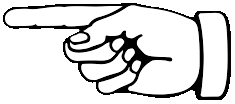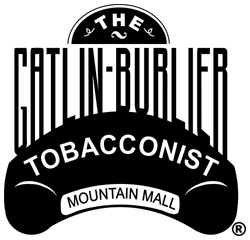You must be 21 years old or older to purchase tobacco products in Tennessee. Other laws and restrictions may be in place. You should be aware of and compliant with you local regulations.
- Home
- Pipes & Tobacco
- The Humidor
- The Lighter Case
- The Chew Bar
- The Cigarette Stand
- Tobacco Cover Up
- Tobacco Politics
- Smokin' Links
- Contact Us
 Age Verification
Age Verification
GATLINBURLIER
TOBACCONIST
~
Mountain Mall
611 Parkway - D Level
Gatlinburg TN 37738
800.862.2204
MENU
 Our menu
Our menuA Reader's Digest Special Report
What's Been Added to Your Cigarette?
Does it taste good? Yes or no, heed this warning: unknown substances added to "safe" cigarettes may, in fact, be as dangerous to your health as tar and nicotineBY WALTER S. ROSS
Walter S. Ross, a Reader s Digest staff writer, is editor of World Smoking & Health, an American Cancer Society journal.
CAN YOU NAME an American product that causes or contributes to 350,000 deaths per year, whose contents are almost totally secret and exempt from all health regulations—yet has a government subsidy? The answer is, of course, cigarettes.
There are many goods whose misuse is dangerous, but it is hard to think of anything comparable to tobacco products. There is no healthful amount of smoking. Even a single cigarette is hazardous.
This is why health authorities for three decades have been concerned about the secrecy over tobacco-product ingredients. When you buy packaged food or pharmaceuticals, the contents are, by law, listed on the labels. Yet cigarettes, always harmful, have no information about ingredients on their labels. Now there are new reasons for concern about what might be in your cigarette.
Starting in the mid-1970s, in response to smokers' continuing demand for a reduction in health risks, new low-tar and low-nicotine "light" brands of cigarettes began appearing on the U.S. market. Lowering tar in cigarettes is itself fairly easy: possibilities include mixing air in the smoke through ventilated filters or perforated papers; narrowing the diameter of the cigarette and packing it with less tobacco; using longer filters; breeding low-tar tobacco. But filters and other devices alter flavor. The smoke becomes drier, losing much of its body. Says Frederick J. Triest, veteran U.S. tobacco-industry flavor consultant: "Regular smokers are accustomed to inhaling a certain amount of taste and body. With low tar, the only way manufacturers can give it to them is in flavors and fragrances." In other words, additives.
In 1979, the then Assistant Secretary for Health and U.S. Surgeon General Dr. Julius B. Richmond became concerned about synthetic chemicals as well as natural substances that were being added to tobacco. Although the latter are generally selected from compounds considered safe to humans, a report on smoking and health prepared by his staff noted, this did "not guarantee that the subsequent products" would be safe when these ingredients were burned.
Since low-tar brands require beefed-up flavors, Dr. Richmond questioned whether the manufacturers might be putting in more harm than they had removed. It was known that, in skin-painting tests, the tar in at least one experi- mental low-tar cigarette caused as many animal tumors as tar in the very highest tar brand. Public Law 95-626 (Section 403) requires the Secretary of Health and Human Services to study "the relative health risks associated with smoking cigarettes . . . containing any substances commonly added . . .and report this information to the Congress." In July 1980, under this authority, Richmond wrote to the six major U.S. cigarette companies asking for "a list of those substances which your firm uses in its brands."
There was international precedent for this request. The governments of Canada and Great Britain have asked for, and received in confidence, the contents of the secret blends of native brands. West Germany, too, monitors cigarette additives.
Dr. Richmond wasn't asking for trade secrets; he wanted only a list of additives. He received polite replies, but no specific information about any substance added to any U.S. cigarette brand.
A second letter, in November 1980, elicited replies, again without specifics, from two companies, American Tobacco and Brown & Williamson. They sent Richmond copies of the "List of Permitted Additives to Tobacco Products" first published in 1975 by the British Independent Scientific Committee on Smoking and Health, an official government body. Neither company said whether it was using any of the additives.
Yet the British list of approved substances, some 350 in all, contains a number of known ammal carcinogens considered potentially hazardous to human health—for example, coumarin. Extracted from tonka beans or from deertongue leaves, or made synthetically, coumarin gives a sweet aroma to cigarette smoke and a taste like that of fresh-cut hay. However, when tests in the mid-Igsos showed coumarin to be a poison, causing liver and other organ damage, the U.S. Food and Drug Administration removed it from the list of food and drug additives "Generally Recognized as Safe (GRAS)".
The American cigarette industry adheres to the GRAS list for its flavor additives, and it started phasing out coumarin a few years after the FDA action. However, the 1982 International Directory and Buyers' Guide of Tobacco International lists 1 l suppliers of deertongue. And, according to one report, suppliers are still selling it to several U.S. tobacco companies.
Several of the additives permitted on the British list—caramel, invert sugar, eugenol, guaiacol— are, or produce, co-carcinogens during burning or smoking. (Cocarcinogens increase the power of even trace amounts of carcinogens to cause cancer.) Eugenol is suspected of being a carcinogen all by itself; angelica-root extract, another British-approved additive, contains carcinogenic substances; and orange-peel oil promotes tumors in mice. Also on the British list are a number of additives, such as dodecan-5-olide and nonan-4- olide, that give rise to carcinogens when heated.
Although the British committee was dangerously premature in approving some poisons and cancer-causing chemicals as cigarette additives, it showed prudence in one regard. It did not approve cocoa, a widely used tobacco flavor. In the mid-1970s, the National Cancer Institute tested a variety of experimental cigarettes, among them one flavored only with cocoa, and it proved to be strongly tumorigenic: mice whose shaved backs were painted with tar from its smoke developed many skin tumors. Results of such bioassays are assumed indicative of harm to smokers. Thus, although cocoa powder makes a healthful drink, smoke from cocoa burned in cigarettes could be hazardous.
Despite these findings, the U.S. cigarette industry is an important user of cocoa. Of major flavorings used by tobacco manufacturers, various forms of cocoa are particularly identified with U.S. brands of cigarettes.
Another major flavor in U.S. cigarettes is licorice. Practically all the licorice extract produced in the United States, about 12 million pounds a year, goes into tobacco. It adds flavor, helps keep tobacco moist and improves the burning quality. Part of licorice extract is glycyrrhizic acid which, when burned, is a precursor for cancer-causing polycyclic aromatic hydrocarbons.
Sugars (whether from cane, corn, beet or fruit) are the major flavor additives used in U.S. cigarettes, making up about four percent of the tobacco by weight in most U.S. brands since the early 1900S. When burned with tobacco, sugar increases tar yield. Certain forms of sugar, such as caramel and invert sugar, produce catechol when heated. This is "the major known co-carcinogen in tobacco smoke," according to scientific publications by Dietrich Hoffmann, associate director of the American Health Foundation.
To make aged tobacco workable and keep cigarettes fresh, chemicals known as humectanes are added, the major ones being glycerol and the glycols. According to a 1979 Surgeon General report: "Glycols are suspected to influence the smoker's risk of bladder cancer."
In addition, burning transforms glycerol into a substance called acrolein which suppresses the action of microscopic cilia that force irritants from the lungs. As a result, the smoker's risk of chronic bronchitis and emphysema is increased and the lungs are open to attack by toxins and carcinogens.
Thus, some of the major flavors and humectants known to be routinely added to cigarettes in the last 70 years are dangerous or at best suspicious with regard to human health. And what of the many synthetic flavors and fragrances devel- oped to beef up the taste of new low-tar cigarettes? Could they be even more hazardous than the additives we know about?
These are the questions Dr. Richmond asked, and for which he received no answers.
Richmond has since left office. To date, inquiries into cigarette additives have not been followed up by his successor, Dr. C. Everett Koop, but the subject has not been allowed to languish. Dr. Edward N. Brandt, Jr., Assistant Secretary for Health, and Dr. Joanne Luoto, acting head of that department's Of fice on Smoking and Health, have been pursuing the Richmond lead and negotiating with the tobacco industry. Horace Kornegay, chairman of The Tobacco Institute, and Stanley Temko, of the firm of Covington and Burling, attorneys, have been appointed by the six major manufacturers to represent them.
Kornegay and Temko have met several times with Brandt and Luoto, and have submitted a proposal for releasing lists of additives used in U.S. cigarettes. But the industry's plans are complex, hedged about with restrictions designed to protect trade secrets. They fear the Freedom of Information Act might force the government to reveal what tobacco companies give in confidence.
Nevertheless, a start appears to have been made. Let us hope our government will not be deterred from pursuing a subject vital to the health of more than 5c million Americans. As Dr. Richmond said in his November 1980 letter to the cigarette manufacturers, "If the substances used pose no immediate or long- term threat, that fact should be made known. If there is a threat, the substance should not be used."
(c) 1982 THE READER'S DIGEST ASSOCIATION, INC.,
PLEASANTVILLE, N.Y. 10570 PRINTED IN U.S.A.
This reprint does not constitute an endorsement, implied or otherwise by Reader's Digest. It may not be Used in any way for advertising or promotional purposes without prior written permission of Reader's Digest, The reprint may not be sold by anyone other than Reader's Digest and no message, with the exception ot the donor's name, may be imprinted on it.
For information on prices and availability of reprints write: Reprint Editor, Reader's Digest, Pleasaarville, N.Y. 10570, or call: 914-769-7000.


